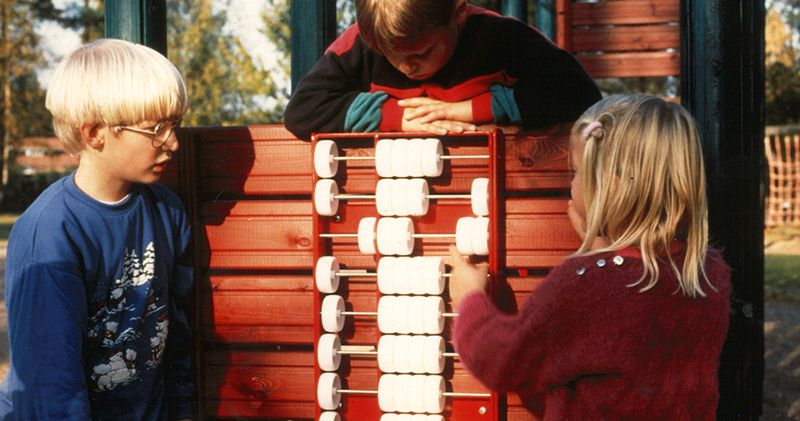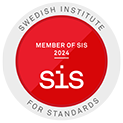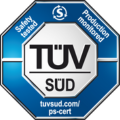HAGS began production in 1948
In 1948, HAGS was founded in a small industrial premises in Aneby by Messrs. Hultgren, Andersson, and Gustavsson; hence, the name HAGS. After a year or so, Rune Gustavsson took over running the company alone when the partners were bought out. HAGS initially produced industrial products, but Gustavsson expanded the range to include outdoor items like bike racks, trash cans, and park furniture.
Today, HAGS is a global supplier of products for play, sports, parks, and marine environments in over 60 markets. With many years of experience and collaborations, HAGS play equipment has become a bestseller all over the world - we take play seriously.
For nearly 75 years, HAGS has focused on creating products that combine joy, learning, and community. Known for technical advantages, safety, quality, and unique design, all materials are carefully selected and manufactured with sustainability in mind. The UniPlay play system, developed in the 1980s, exemplifies this with its durable, recyclable materials.
HAGS continues to provide opportunities for play and activity worldwide, committed to longevity and sustainability.
HAGS acquires SMC
In the mid-1980s, the Hexagon Group expressed interest in acquiring HAGS. This led to HAGS acquiring SCM Motala's shares, expanding their play system portfolio with products like UniPlay, Stugby, Stor Poly Play, Lill-Poly Play, Östergyllen, and Blåklint. This acquisition allowed HAGS to diversify its outdoor play products and conduct age analysis to focus on developmental needs of different age groups. Products were categorized for younger children (up to 6 years) including Lill-Poly Play, Blåklint, and Stugby, and for older children (up to 12 or 14 years) including UniPlay, Östergyllen, and Stor Poly Play.
The development of play
In post-war Sweden, the booming economy and high demand for Swedish goods led to the decision to construct a million new homes (The Million Programme) to improve sanitary conditions. This created a need for quality outdoor environments with play and recreation areas. In the late 1950s, HAGS was asked to produce swings and slides. Recognizing the opportunity, Rune Gustavsson integrated these products into their offerings. This addition became a significant part of HAGS' manufacturing in the 1960s and 70s, with stand-alone play items like swings, climbing games, see-saws, carousels, and slides becoming popular.
HAGS Play Systems
UniPlay play system for older children
The UniPlay system has been on the market for over 30 years, offering flexibility in colors, shapes, sizes, and themes to meet customer preferences. In the mid-80s, HAGS built large facilities based on the Summerland concept, including Gulliver scaffolding in Stavanger, Tanumshede Sommarland, and others. HAGS also developed Tube Slides, allowing for taller and longer slides compared to the previous 3.0m limit for open slides.
UniMini play system for smaller children
The UniMini play system was launched in late 1992, adapting UniPlay's flexible components to a smaller module size. Though initially named MiniPlay, it was rebranded to UniMini. Many UniMini and UniPlay components are compatible, allowing for interchangeable use with some adaptations.
Agito
In the early 2000s, HAGS developed the Agito mobile play system, featuring moving, compliant, and resistant play elements that mimic natural movements. Designed to enhance strength, fitness, and coordination, Agito supports the body's natural movement patterns, similar to dancing.
Until the 2000s, HAGS systems primarily used floors, posts, and screens, but there was growing demand for climbing equipment. Inspired by a sailing trip, Sven-Åke Sjöstam developed Agito to replicate the full-body movement of sailing. This innovative system marked HAGS' venture into climbing themed play equipment.
Design
HAGS recognized early the importance of collaborating with designers and architects, introducing innovative thinking in color and shape. Björn Alskog, Birger Ståhl, and Ola Lindstrand significantly influenced HAGS' production. HAGS pioneered the use of wooden products, starting with Björn Alskog's Poly Play system, later named Lill Poly Play, with a larger variant called Poly Play. Architect Jan Wickelgren designed the Stugby play system, a modular 1.40m building block concept, and continues to contribute to HAGS' designs.
In the 1970s, Bo Qvennerstedt and Torulf Löfstedt developed the flexible Småland building system with a 1.0m module, allowing customized play structures. They later formed ABBOT, collaborating with HAGS for many years. The system used poles, floors, and screens with various play functions like slides, climbing nets, and ladders.
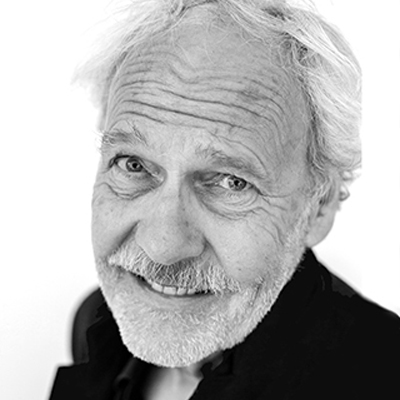
Jan Wickelgren
Park and Urban range
In the early 1950s, HAGS recognized the need for park furniture like benches, tables, and trash cans for new residential areas. Clothesline racks were also introduced as balconies were not allowed for hanging carpets. In the 1980s, HAGS systematized its furniture range, offering customizable seating with different bases, including free-standing steel legs and concrete foundations. The Aveny and City-Form ranges allowed for uniform combinations of benches, tables, and wastebaskets.
The park assortment has been a significant part of HAGS' global sales. Recently, new architects have refreshed the furniture range, giving it a more architectural and modern look.

HAGS takes play seriously
"HAGS takes play seriously" was an early slogan emphasizing safety. In 1977, HAGS hired TÜV Rheinland to certify play equipment according to the German standard DIN-7926, enhancing credibility and safety assurance. Collaboration continued with TÜV SÜD from the 90s. In 1977, HAGS published LEKA magazine to discuss safe outdoor environments and new products, featuring contributions from various organizations.
Children's safety and development have always been central to HAGS' product design. In the early 1980s, HAGS initiated the development of a Swedish national standard for play equipment, completed in 1989 as SS 99 10 10-17. HAGS was also involved in creating the European standard published in 1998.
HAGS collaborated with Halmstad University in the early 1980s to offer courses for preschool teachers on child development and safe play, including European safety standards. This collaboration spread competence in schools and led to higher safety demands for play areas. HAGS' expertise has been instrumental in shaping current safety standards.
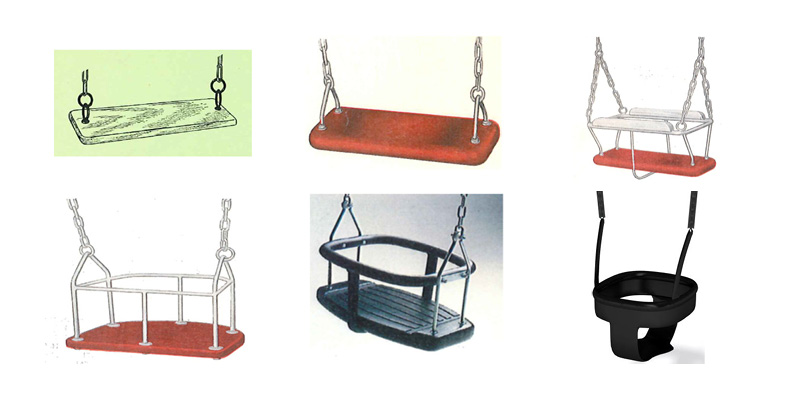
We are serious about fun!
For over 70 years, HAGS has specialized in playground equipment, combining fun with safety and continuous maintenance. Our expertise is showcased through HAGS Academy, offering courses on playground safety, operation, and maintenance. These courses aim to educate and inspire, while ensuring we stay informed to create safe, engaging outdoor environments for play and recreation.
A playground should be challenging but safe, exciting but not dangerous.
Designed in Sweden, manufactured in Poland
In 2017, HAGS consolidated 11 facilities from Aneby, Sweden into a new 27,000 m² state-of-the-art manufacturing facility in Sosnowiec, Poland. This centralized production has reduced manufacturing times and is well-positioned to meet international demand. Investments in new paint lines and infrastructure ensure HAGS products remain competitive in a dynamic market.
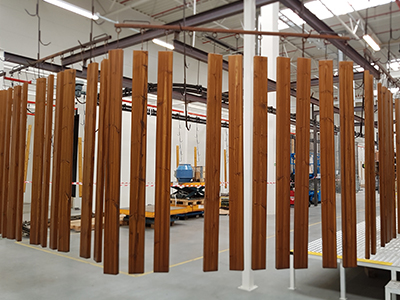
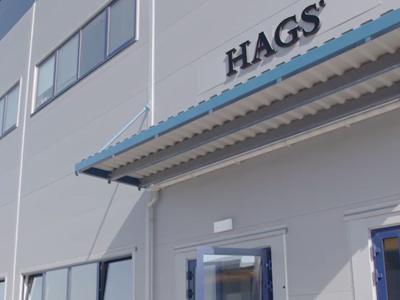
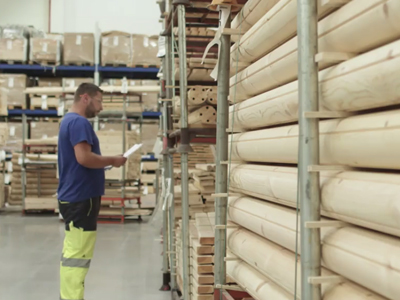
75 sustainable years is just the beginning...
For 75 years, HAGS has prioritized sustainability, caring for both the environment and people. Our brand promise, "Inspiring All Generations," reflects this commitment. We aim to create active, sustainable outdoor environments by manufacturing and delivering products in an environmentally and socially responsible way. While we've made significant progress, we remain dedicated to improving and strengthening sustainability in our operations, recognizing the urgent need for collective action to protect our planet.
HAGS Logo through the years
 |
 |
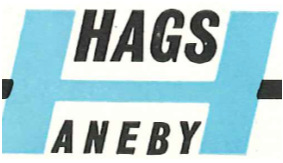 |
 |
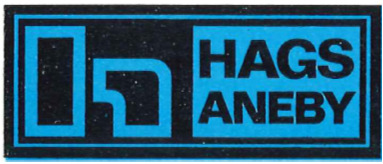 |
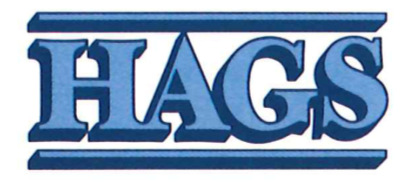 |
 |
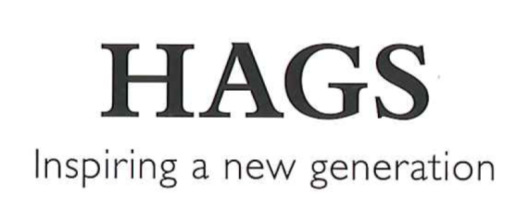 |
 |

